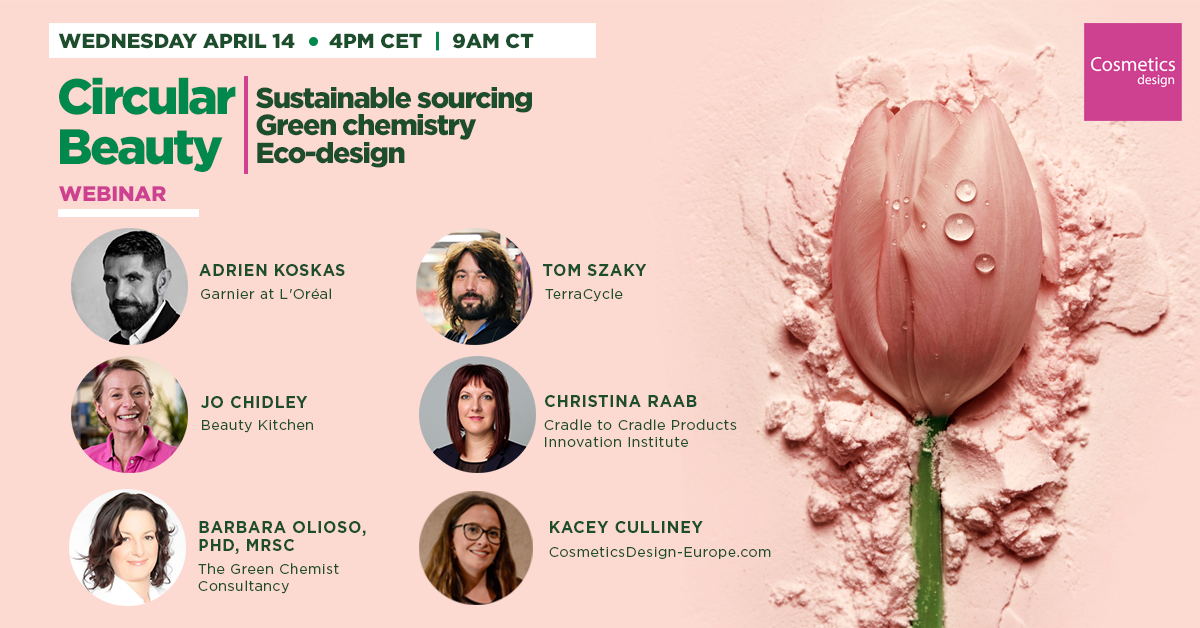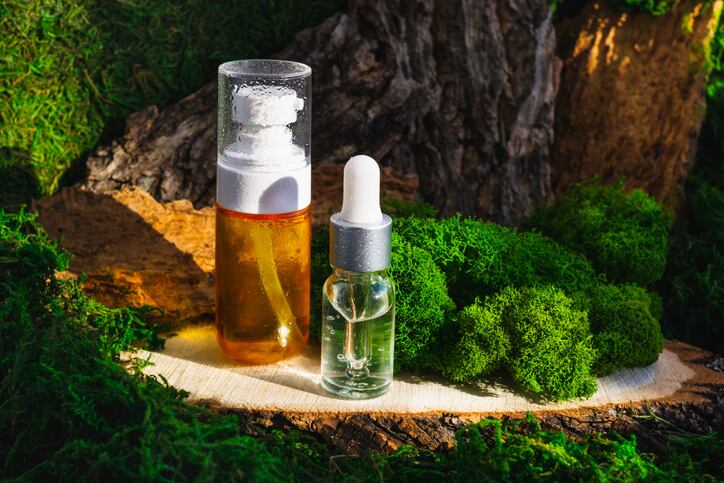The concept of green chemistry – defined first in 1998 by Paul Anastas and John Warner in their ‘12 Principles of Green Chemistry’ – had gained important traction in beauty over recent years. Earlier this year, for example, international beauty major L’Oréal said it was transitioning its entire business towards green sciences, aiming to have 95% of its ingredient portfolio bio-based, from abundant minerals or circular by 2030.
The 12 Principles of Green Chemistry
1. Waste prevention 2. Atom economy 3. Less hazardous chemical synthesis 4. Designing safer chemicals 5. Safer solvents and auxiliaries 6. Design for energy efficiency 7. Use of renewable feedstocks 8. Reduce derivatives 9. Catalysis 10. Design for degradation 11. Real-time pollution prevention 12. Safer chemistry for accident prevention.
But how far off were we in seeing a widespread uptake of green chemistry principles across the global beauty sector?
Barbara Olioso PhD MRSC, managing director of The Green Chemist Consultancy, said achieving true circular beauty on a global level would require a “great shift in culture and mindset” – well away from the traditional ‘take, transform and dispose’ idea.
Olioso said it was critical industry focused on reducing its carbon emissions and considered every environmental issue attached to cosmetics production, including deforestation and water pollution. And using green chemistry was an important way to achieve this shift, he said.
A circular ‘mindset’ that needs longer-term backing
Speaking at CosmeticsDesign’s Circular beauty - Sustainable sourcing | Green chemistry | Eco-design webinar last month (now available to watch on-demand), the green chemistry expert said: “Green chemistry is very much the circular model applied to science and chemistry.”

Whilst the key principles behind green chemistry had been defined, she said it remained “more of a mindset” without one clear definition. But, it centred around using efficient processes – less energy and water, for example – to manufacture effective cosmetics that did not pollute the environment or prove toxic to aquatic life or humans working in the supply chain, she said.
“In my opinion, the key parameter for green chemistry and being environmentally-friendly is end-of-life – aquatic toxicity and biodegradability.”
But for green chemistry to become the norm, Olioso said it would need more backing. “Regulators have a role to play to support green chemistry and then [it needs] investments behind it, because it takes a lot of time and money. So, these investments need to have the back up of them regulators.”
In the EU, there were a lot of “gradual movements” happening already, she said, including upcoming restrictions on microplastics and talk about changes to use of D5 and D6 cyclic siloxanes in leave-on cosmetics. But efforts had to continue if industry wanted to align with longer-term environmental goals, she said.
Solid beauty, bio-fermentation and renewable carbon innovation
Olioso said there was “a lot of innovation” happening in the green chemistry space that proved particularly promising, including renewable carbon strategies that created “very effective, efficient molecules” for beauty formulations and meant manufacturers avoided interfering with food supply chains or contributing to deforestation.
Bio-fermentation was a part of this, she said, enabling developers to create new, alternative ingredients – cannabidiol (CBD) could now be made from bio-fermenting yeast, for example.
Beauty manufacturers were also increasingly innovating with solid formats for the likes of shampoo and conditioner, Olioso said.
“Lush pioneered the concept of solid shampoos, and they saved millions and millions of plastic bottles, and I’m really grateful for what they did because they opened a door to this new way of using shampoos. And I think in the last few years, thanks to them, there has been more of a familiarity with using this type of product.”
“…I am very fond of this format. I think it’s great – it casts plastic out altogether and they’re fun to use. I think at home, for domestic use, it’s a great solution,” she said.
Circular Beauty expert brainstorm with The Green Chemist Consultancy, Garnier, Cradle to Cradle, Beauty Kitchen and TerraCycle

Interested in hearing more about how green chemistry can contribute to a circular beauty future? Want to know how brands and manufacturers are actively investing in these principles to push forward with sustainable formulations and supply chains? You can register to watch the full Circular beauty - Sustainable sourcing | Green chemistry | Eco-design expert webinar on-demand now.




